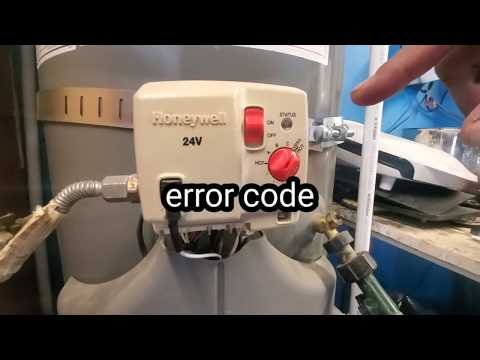
Understanding Error Code E1 on Rheem Water Heaters
When you first see that annoying E1 error code, you might be wondering what it really means. In simple terms, it indicates an issue with the temperature sensor, which is a crucial part of your water heater’s operation. This little device monitors how hot or cold your water is, ensuring your daily showers are just the right temperature. Imagine if your thermostat at home went haywire and your house got too hot or too cold—you’d want to fix it, right?
The temperature sensor’s prime role is to communicate with the heater’s control board, giving it real-time updates on water temperature. If it starts malfunctioning, the control board doesn’t get accurate information, and that’s when you see the E1 code. It’s sort of like driving a car without a functioning speedometer; you’re guessing the speed without accurate data.
An error like this can happen for several reasons. It could be a loose connection, a faulty sensor, or even an obstruction affecting the sensor’s ability to read correctly. Whatever the cause, the important thing is to address it promptly. Ignoring it might lead to bigger problems down the line, much like ignoring a leaky faucet could lead to more significant water damage later. The good news is, with some patience and a little know-how, you can usually fix this issue yourself.
Steps to Reset and Address the E1 Error
Okay, here’s the deal: before you dive into fixing this issue, let’s do a quick safety check. Ensure the water heater is turned off and give it some time to cool down. This step is crucial because dealing with electrical appliances can be risky if proper precautions aren’t taken. Once you’ve ensured safety, it’s time to roll up your sleeves and get to work.
First, locate the power supply to your water heater. This is usually a switch or a circuit breaker. Turn it off to stop any electrical flow (think of it like unplugging a stubborn computer to reset it). Once the power is off, you’re ready to address the sensor issue. Open the heater panel to access the control board—this is like opening the hood of your car to check the engine.
Look for the temperature sensor’s connection to the control board. It’s usually a small, copper-looking wire or device attached to the board. Make sure it’s snug and properly connected. A loose connection can disrupt the sensor’s ability to communicate with the control board, much like a loose headphone jack can cause audio glitches. If it seems loose, gently tighten the connection; if it’s damaged, you might need to replace it. Once everything seems in order, close the panel.
Testing and Final Steps
Now, let’s test your handiwork! Restore the power to your water heater by flipping the switch or turning on the circuit breaker. Give it a few minutes to recalibrate. This is like turning your computer back on and waiting for it to boot up. Keep an eye on the error codes to see if the E1 message reappears. If everything is working correctly, you should see the error disappear.
If the E1 code is still flashing, the problem might be more complex than a loose connection. In such cases, consulting the Rheem customer service team or hiring a professional technician can be a smart move. Sometimes, underlying issues such as a defective sensor or a problem with the control board itself need expert attention, much like you would take a car to a mechanic for a persistent issue.
Finally, consider regular maintenance checks to prevent future problems. Just as you’d routinely service your car to keep it running smoothly, you should periodically check your water heater to ensure all parts function correctly. This small effort can save you from cold showers and stressful repairs down the line.
In conclusion, tackling an E1 error on your Rheem water heater can be straightforward with a bit of patience and caution. By understanding the problem, taking practical steps, and seeking help when necessary, you can enjoy uninterrupted hot showers and peace of mind.